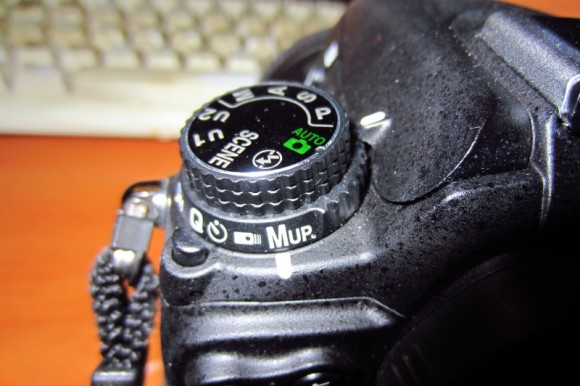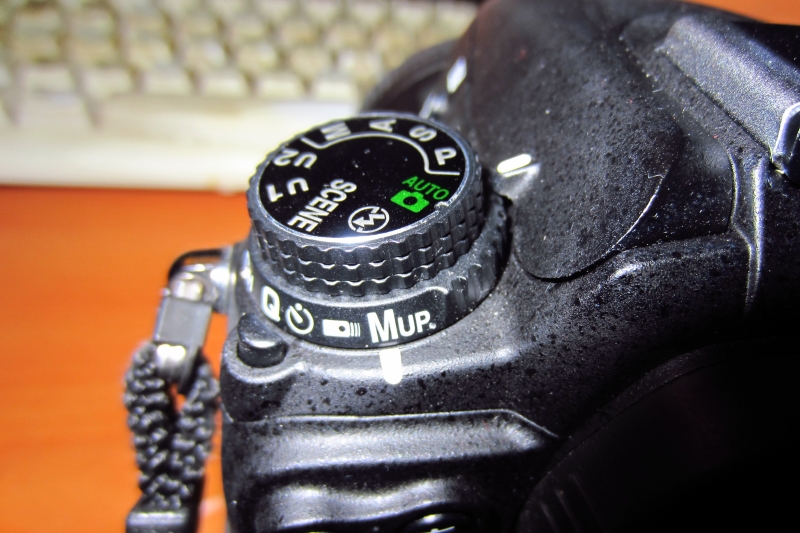Nikon D7000 – Mirror Lock-Up Confusion
I wrote earlier about a problem I was having with the LCD screen on my newish Nikon D7000. You can read about it in detail here. Essentially, the problem was that on hot days while out with the camera, the LCD would stop functioning properly. It would either stop working altogether or would kind of flicker and almost show an image but then just remain dark. At those times, even pushing the Play button would have no effect. The LCD would simply not turn on. The camera is still under warranty and amidst a certain amount of the usual chaos and confusion, I sent the camera to Nikon to be checked over.
A week or two later, I got a call from the camera store to tell me that Nikon had checked over my D7000 and I could come in and pick it up. Over the phone, they said that there was nothing wrong with the camera and that it was operating the way it was supposed to. I’m not sure if that meant the LCD was designed to shut down when the camera reaches a certain temperature – a cutoff circuit of some kind – or if that just means nothing is broken. I assume the latter because if this was a cutoff circuit I’m sure it would operate in a more regular way. The problem I was having was very erratic.
Nikon’s advice was to hold the camera differently so that it doesn’t heat up as much. That makes sense, but it also tells me there is some kind of a design flaw at work here. I don’t hold the camera in an unusual way. I hold it by the camera grip. That’s what the camera grip is for. I dislike hanging it around my neck with the camera strap. The D7000 with the 18-105 kit lens is quite heavy and it is uncomfortable around my neck. I also find that I have less control over the camera when it is hanging around my neck. It bounces against my chest and it swings around. It’s a particular problem when I bend down. The camera swings forward and can easily smash into things. Therefore, I just hold the camera in my hand at my side by the camera grip. Then it is always ready to go. Apparently, holding it this way increases the temperature of the camera and this leads to the LCD problem I’m having.
I can’t say that this whole experience has been a positive one for me. Most of the problems came from the camera store staff. My initial conversation was good. The clerk was very helpful as we discussed the problem I was having with the D7000. However, when I returned with the camera to send it in under warranty, I was handed off to a second clerk – a guy who knew nothing about me or the camera or the history of the problem. In fact, he thought I was there to pick up a camera, not drop one off. Once we got that figured out, I then had to go over the whole story a second time, and who knew how much this guy understood? Finally, after the telephone call when I went in to pick up the camera, I faced a third clerk – a young woman whose job was clearly just to hand cameras back to their owners. She knew nothing about my camera. She offered no information or background. In fact, she knew nothing about cameras in general. She simply found my camera – stacked up in a drawer with thirty other cameras in a big pile – and gave it to me with the instruction to “check it.” (She was meanwhile talking to other customers coming in through the door and giving them prices on various cameras.)
What happened next was partially my fault and partially that of Nikon (and this camera store). I had the camera battery and a memory card with me, and I put those back into the camera. When I did so, the camera suddenly came to life and the shutter clicked and sputtered and fired or did something. It was then I noticed that the camera power switch was set to “ON”. So Nikon, after checking over the camera had shipped it back in the “ON” position. Of course, I should have checked myself before I inserted the battery and memory card. Normally, I would have, but I was tired after a long day at work and I get flustered in camera stores. In any event, I think it is very poor practice on Nikon’s part to send back a camera with its power switch set to “ON”. It’s also very poor practice on the part of this camera store not to check the condition of a returned camera themselves.
Then when I tried to test the LCD by taking a picture, something was wrong. I could hear the camera click and do something, but then the camera wouldn’t take a picture. No image would appear on the LCD and the mirror and shutter wouldn’t complete its movement. It just got stuck or something. My heart sank as I imagined that my camera was now in worse condition than when I had sent it in. (This wouldn’t have surprised me…)
The clerk helping me was no help at all. She took the camera from me and after a moment said that the problem was that I was shooting in the Automatic mode. That was nonsense of course. Shooting in the Automatic mode would have nothing to do with this problem. It annoyed me that the person helping me with my expensive camera was so inexperienced as to offer this as the solution. I felt rather unappreciated as a customer.
She then pressed the shutter button herself and the action completed and a picture appeared on the LCD. She handed the camera back to me and said that there was no problem. She said that I just have to push the shutter button twice. I looked at her in astonishment. I wanted to shout at her not to be an idiot. In what camera is it normal to have to push the shutter button twice in order to take a picture? How can she imagine that that is normal behavior? She said something about Nikon cameras. She uses Canon cameras, so she isn’t very familiar with Nikons. (This coming from a camera store clerk.)
I tried again, and the same thing happened. I did, in fact, have to push the shutter button twice in order to have the camera complete its action. The clerk seemed to think this was fine and pretty much wanted me to take my camera and go home. She clearly just wanted me out of the camera store. I insisted that something was wrong. This wasn’t normal. She then got on the phone and called someone upstairs in the camera store – someone with more experience I fervently hoped – to come down and help me out. While she was on the phone, I went over the camera again to try to figure out what was going on. I had already gone through all the menus to see if there was some strange setting in place. Everything looked fine, though rather unusual. The Nikon technicians had clearly changed all the settings as they ran their tests and hadn’t returned them to even the default settings. This, too, struck me as unprofessional. However, there was nothing in the menu settings to make the camera behave this way.
While going over the camera, I had also noticed quite a few marks and smudges and streaks on the LCD’s protective screen. I had made sure the screen was perfectly clear and clean when I handed it in. These streaks and marks had clearly been put there by the Nikon technicians while handling the camera. I was worried one of the marks was an actual gouge, but it wasn’t and I managed to clean it up later. However, you’d think they would clean the camera up before sending it back to the customer.
Then I found the problem. The camera wasn’t actually malfunctioning. The problem was that it had been left in the Mirror Lock-Up shooting mode. This is where my inexperience came into play. The D7000 is a pretty advanced camera – far more advanced than I need probably – and there are lots of settings and controls that I never use. Mirror Lock-Up is one of them. I hadn’t used it since I bought the camera, and I had just forgotten that it was there. If I were more experienced, perhaps I’d have recognized that this behavior of the camera was normal for Mirror Lock-Up mode. As it was, I had no idea what was going on and I hadn’t even thought to check.
It makes sense to me now. If someone is going to check over a camera and perhaps clean the sensor, they’ll probably put the camera in Mirror Lock-Up mode at some point. However, it also makes sense to me that when you send a camera back to a customer, you TAKE IT OUT of Mirror Lock-Up mode. In fact, just take a minute or two to clean the camera of marks and dust and reset everything to default mode and take the camera out of any unique settings you used for the testing. Restore the camera to its factory default settings and then just put it in Single Shot mode and Automatic. That makes sense, right? Why leave the camera in some obscure setting that will surely confuse the customer? And why leave the camera in the power on setting when that will surely annoy the customer?
From a customer service point of view, I’d do exactly what I suggest above – reset the camera to its factory defaults and put the mode dial at Automatic and Single Shot and turn the camera OFF. And – this is very important – inform the customer that this will be done.
I’d also make sure that the customer deals with the same clerk in the store each time so that there is no confusion and the customer doesn’t have to repeat the same story over and over again. If I were a store clerk, I’d make it my business to help MY customer when he returns. It would be a point of professional pride. I’d want to take care of that person.
I’d take it one step further. When servicing a camera, I’d make sure to return the camera in better condition – cleaner – than when it was handed in. I’d even add a little personal touch to make the customer feel valued – perhaps throw in a little cleaning cloth. It doesn’t really matter what it is. A gesture like that can reap huge benefits in customer loyalty. Right now, I feel like a bit of a chump going back to this same camera store over and over again. I never feel good shopping there. It’s just that I’ve never found a better one in Taipei. It’s the best of a bad lot.
Tags: customer service, LCD, LCD screen, Nikon, Nikon D7000, Single Shot, warranty


